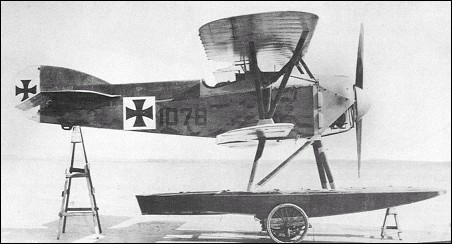 |
Hansa-Brandenburg W.161917 |  |
| FIGHTER | Virtual Aircraft Museum / Germany / Hansa-Brandenburg |
 |
Intended primarily as a successor to the KDW in the station defence fighter role, but also to investigate the potentialities of the application of rotary engines to seaplanes, the W.16 was designed by Ernst Heinkel in 1916, and was a conventional twin-float single-seat fighter floatplane of wood and fabric construction with ply-skinned fuselage and floats. Like Heinkel's earlier "star strutter" fighters, the W.16 lacked bracing wires, these being rendered unnecessary by single struts extending from the base of the inclined Vee-type interplane struts to the top of the forward fuselage mainframe. Power was provided by a 160hp Oberursel U III rotary engine and armament comprised two synchronised LMG 08/15 machine guns. Three prototypes were ordered, the first of these being tested in February 1917, and the third example was sent to Adlershof for static tests. No further development was undertaken as the German Navy had lost interest in single-seat fighter floatplanes.
|  COMPANY PROFILE | |||||||||||||||||||||||||||||||||||
 |

|
